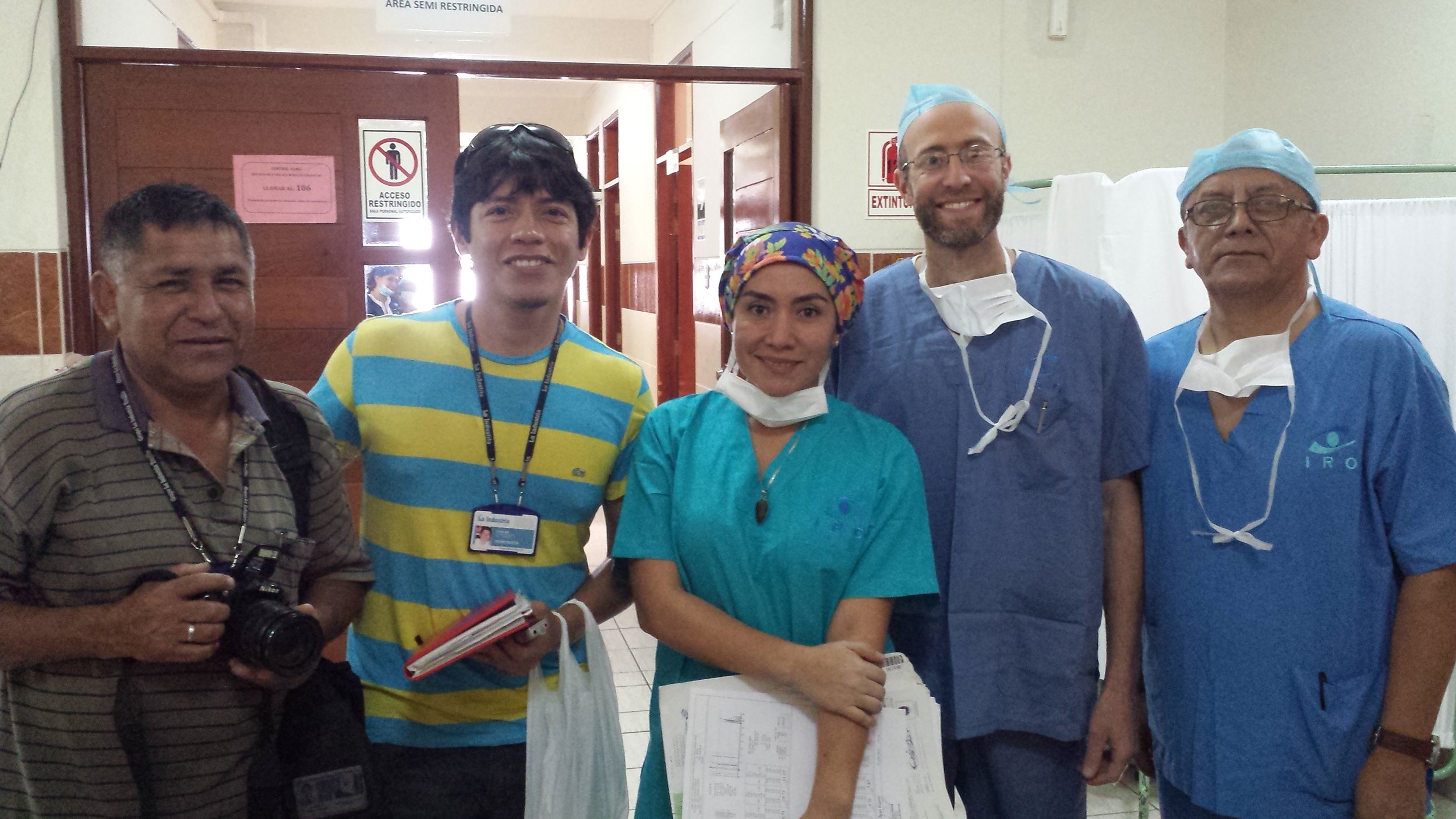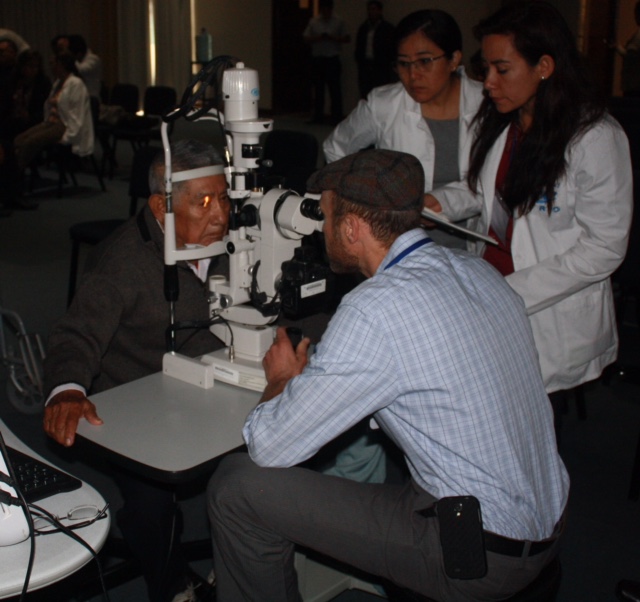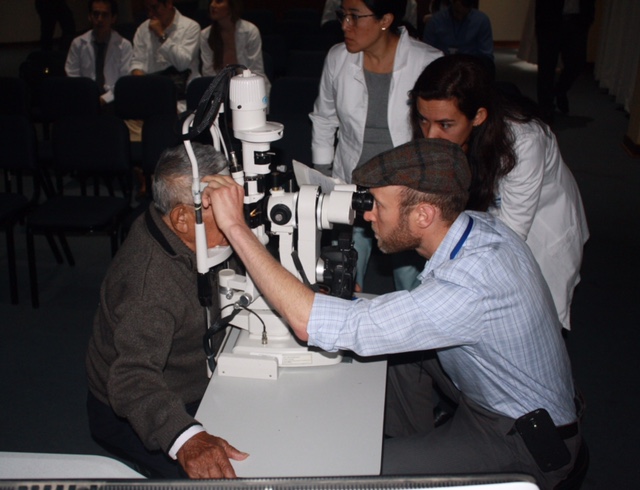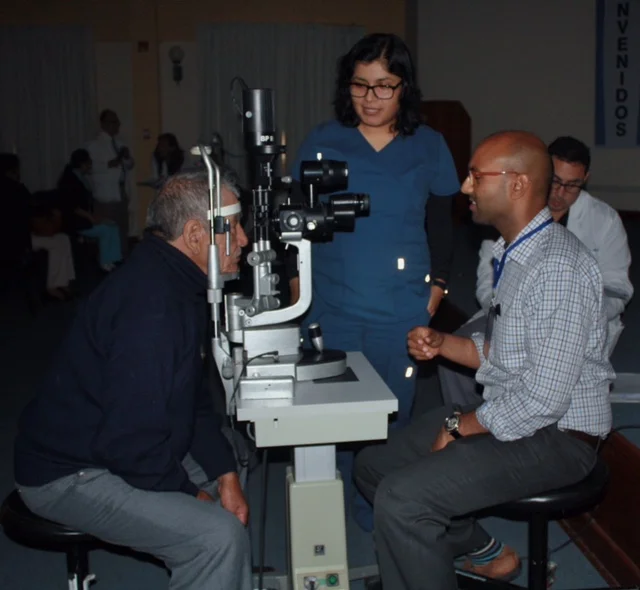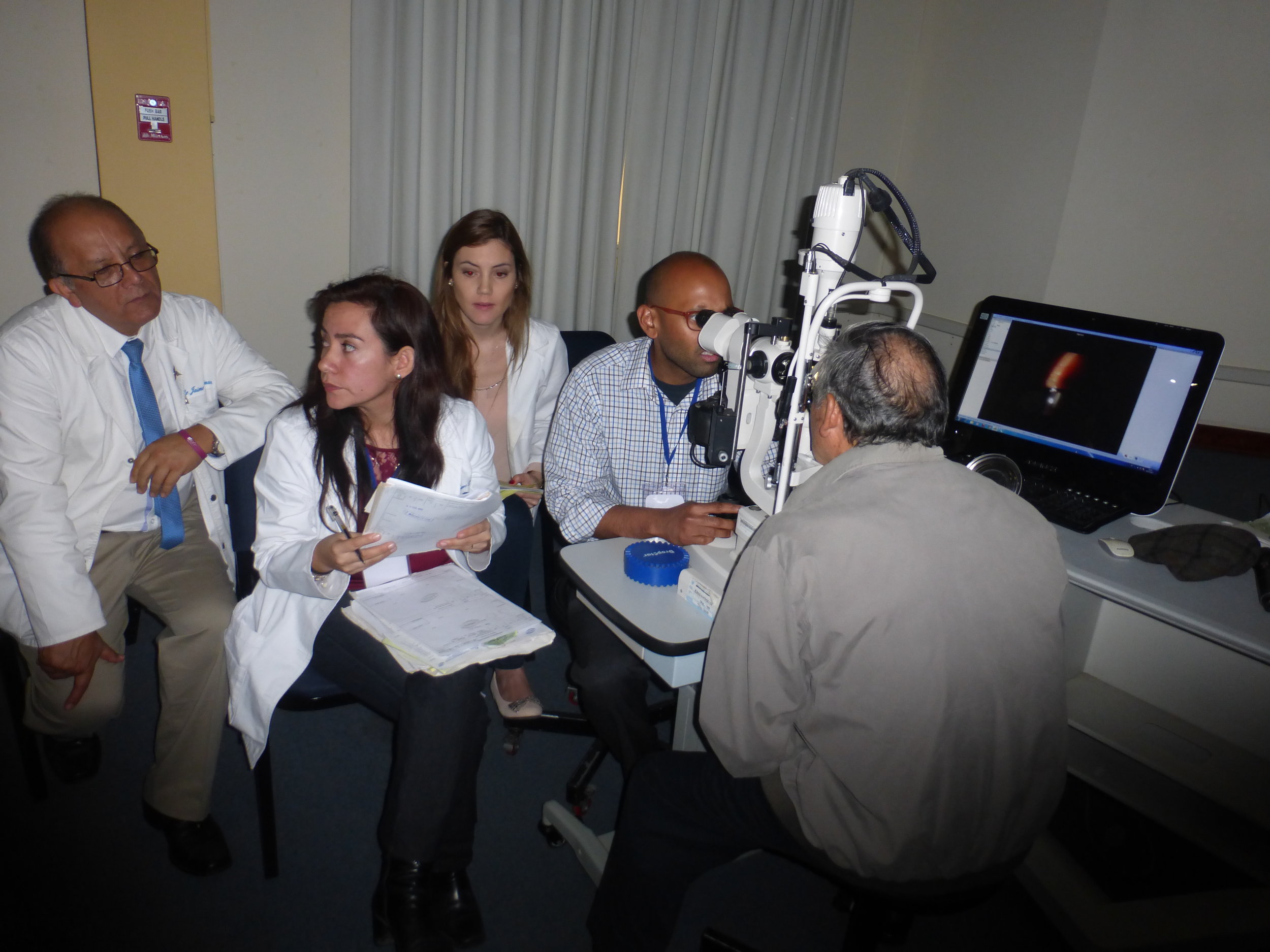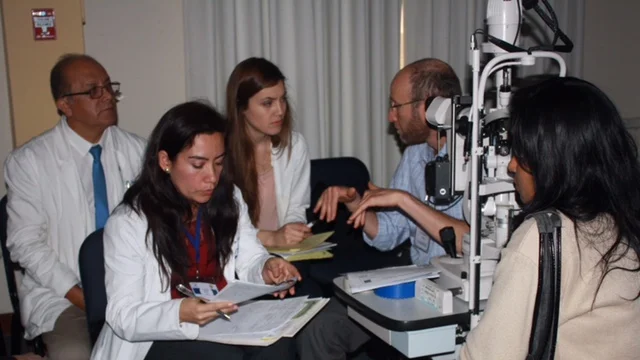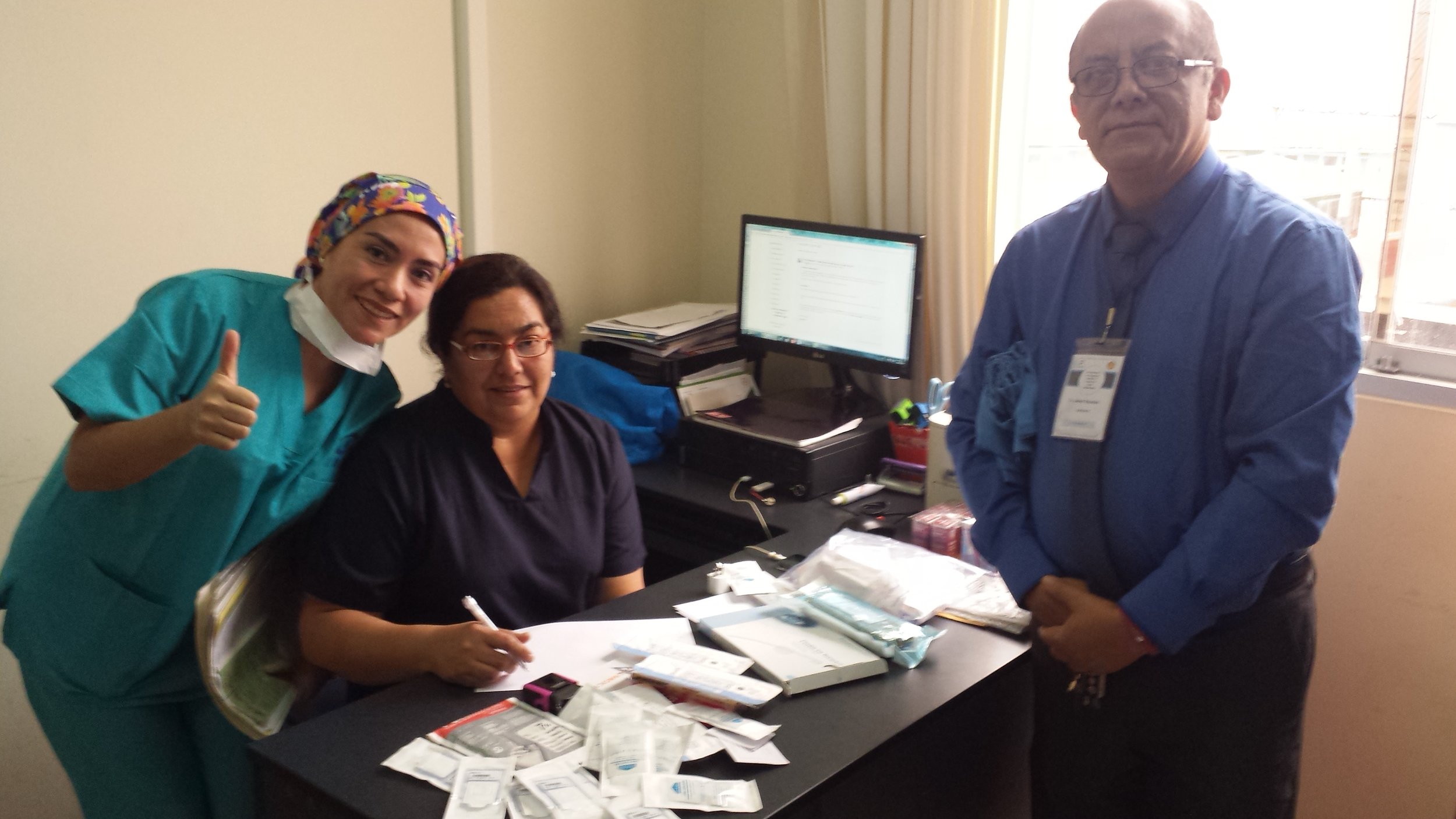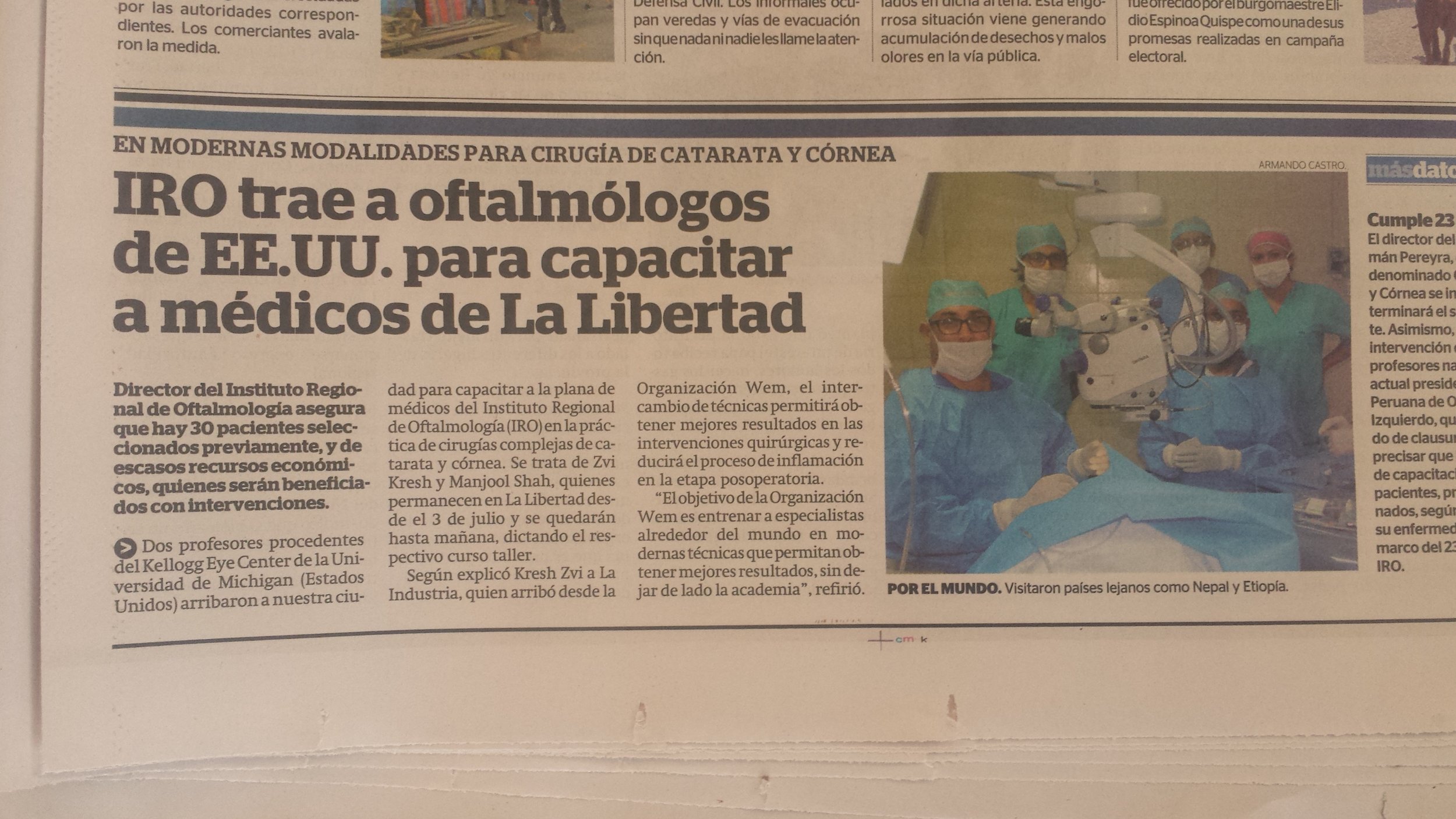Report, Photo Diary & Thank-You Letter: Drs. Manjool Shah and Zvi Kresch visit Trujillo, Peru
World Eye Mission organized a trip with Dr. Manjool Shah and Dr. Zvi Kresch to Trujillo, Peru in July 2017 to work with faculty and residents at Instituto Regional de Oftalmología (IRO). Both are professors at University of Michigan Kellogg Eye Center.
- A thank-you note from Dr. Jaime Huamán Pereyra, IRO Executive Director.
- A note from Dr. Euler Valásquez, Chief IRO Resident
Instituto Regional de Oftalmologica, Trujillo, Peru
Drs. Zvi Kresch and Manjool Shah
July 3 – 7, 2017
Monday, July 3
After reporting to IRO for a grand rounds presentation on medical ethics, we began screening patients for cataract surgery who had been previously selected given their complexity. Approximately 40 patients were screened many of whom had non-dilating pupils, posterior synechiae, high myopes, short axial lengths, prior glaucoma surgery, etc. All patients were examined by IRO faculty and residents and either Dr. Kresch or Dr. Shah. Accompanying each patient presentation was a discussion between the visiting faculty and the IRO residents and faculty regarding surgical plans, potential pitfalls, and lens power calculations. This discussion was aided by the ability to project the slit lamp examination on a large screen. At the end of the day, approximately 30 patients were selected to proceed to surgical scheduling. Patients who were not selected for surgery during this screening process were still reviewed by the team, with varying treatment plans and surgical suggestions to be implemented after our departure.
Tuesday, July 4-Friday, July 7
Beginning at 7:30am, both Drs. Kresch and Shah would provide interactive lectures to the residents and faculty. These were attended by 40-50 physicians, approximately 20 of whom were residents in training and the others were practicing ophthalmologists. These lectures covered routine topics in complex cataract and anterior segment surgery (zonular weakness, small pupils, dense cataracts, white cataracts) as well as subspecialty topics such as uveitis and minimally invasive glaucoma surgery. At 8:30am, upon completion of lectures, patients who had been operated on the previous day were examined by the operating team. The postoperative management of these complex patients was reviewed by all. Once all patients from the previous day had been appropriately checked, we proceeded to the operating rooms to begin that day’s surgeries.
We each had our own operating room, in which we staffed one or two local junior faculty members from IRO. Residents would occasionally observe surgeries if they were able to leave their previously assigned clinical responsibilities. Additionally, one of the operating rooms had a live transfer of video/audio to the conference room. Surgery consisted of complex cataract surgery, and it was not uncommon to encounter a combination of zonular laxity, dense cataracts, and small pupils. Many of these patients had undergone previous intraocular surgery for glaucoma or retinal pathology. Patients clustered towards the extremes of axial lengths.
Each day, 3-5 cases were performed by each surgical team. Over the course of the week, 4 Malyugan rings were inserted, and each IRO faculty member who had agreed to participate with us was able to place at least one capsular tension ring and one set of iris hooks. Techniques to address dense lenses, including chopping, were reviewed. Anterior vitrectomy pearls were also reviewed with faculty on an as-needed basis. One patient with glaucoma underwent a combined gonioscopy-assisted transluminal trabeculotomy (GATT), a relatively new minimally invasive glaucoma surgical technique.
Summary
Over the course of a very busy week, we were able to participate in the care of numerous complex patients. Additionally, the opportunity to interact with a dedicated faculty, engaged residents, and top-notch surgical staff was fantastic. While we hope that we were able to provide the faculty and residents with a framework to address complex anterior segment surgical problems and approach challenging cataract cases, we also felt that our visit taught us a great deal about different models of care in more resource-challenged locations. Furthermore, the connections we were able to form with our hosts at IRO will hopefully lead to more opportunities for academic collaboration in the years to come. We were all extremely thankful for the hospitality shown by Dr. Jaime Huaman, as well as the opportunities afforded to us by World Eye Mission and Kellogg Eye Center. Additional recognition is deserved for Stephens Instruments and Alcon, who donated many of the complex surgical devices we were able to introduce.
